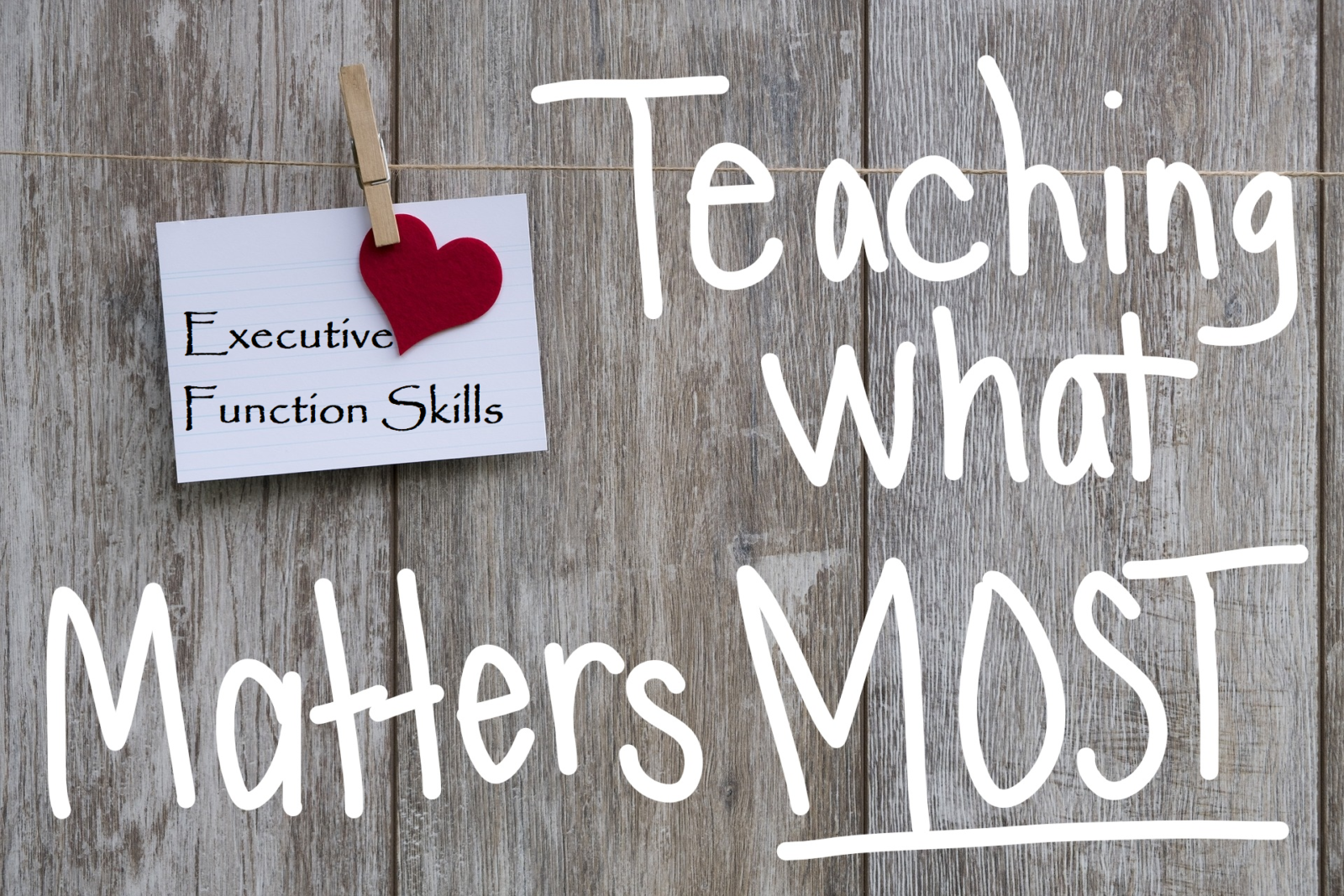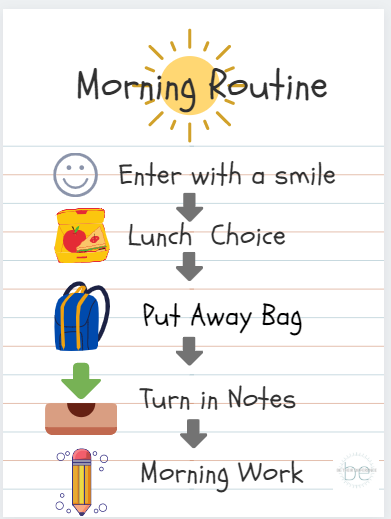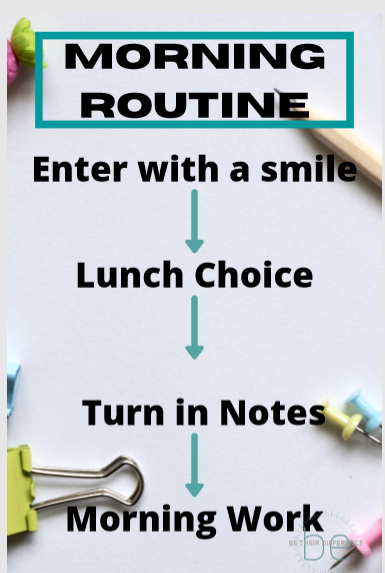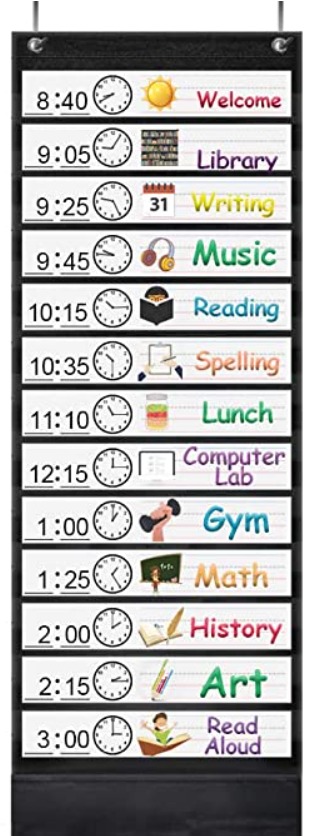Executive Function Skills are the buzz right now in education. We hear it in many of the IEP meetings we sit through. Parents are at home searching YouTube trying to figure out exactly what it means if their child has weak Executive Function Skills. You can read a more about it in my older post called Executive Function…say what?
But I’ve got news for you!
Executive Function Skills are not only important for kids who struggle learning or who are on an IEP. Executive Function Skills are skills that every single one of us need to function successfully from day to day.
You see, I have a theory!
If we would focus on the development of Executive Function Skills in the primary grades, could we change how students feel about learning. Could it actually make learning easier for them? Yes! Yes! Yes!
5 Strategies Every Teacher Needs to Implement in their Classroom
Morning Routine
Have a clear morning routine. No matter what grade you teach, you need to have a morning routine posted on the wall where everyone can see it. The best way to show a process is by using a flow chart. The pictures below are examples of Morning Flow Charts that can be used in any grade level. You can grab your own copy of them here.
On the first day of school it should be your goals to show them exactly how to do this routine. Use the 3 M’s to teach this process. Start with modeling the routine for your students. Model it the right way more than once. Model it with a missing step (be goofy, make it fun). Ask the students to tell you what you did wrong. Model it right again!
Let the kids give it a try. This is where you get to the 2nd M-Monitor. I personally like having one group try it at a time so that the class can help me monitor. We then can talk about what each group did right and how it could be better the next day! This right here my friends it the 3rd M- Measuring Success. This will take much repetition. But, I promise you, if you take the time at the beginning to get the strategy right, you will be making the rest of your mornings so much easier and productive. This daily practice will create good habits and promote development of the Executive Function Skills.
Daily Visual Schedule
“Is it lunchtime yet?” “When will I see my mom?” “When is it time to go home?” These are constant questions from students in elementary school. They have no concept of time and they do not usually know how to tell time when they start their school career. Elementary age kids cannot understand what a given amount of time feels like.
Each day you can show your students what their day is going to look like. They will see what needs to be accomplished before lunch. They will also learn to understand what time feels like when they’ve made it through the tasks of the day several times using a visual schedule of their day. In the younger grades you can even do this 2 times a day (at the beginning of the day and after lunch). This just breaks the day into shorter segments for them.
You can take it a step further and put your schedule on picture cards in a pocket chart. This will allow you to flip over the cards as you complete each part of your day. This also will help students with shifting their attention to the next task. Understanding how time feels as it passes will develop and strengthen their Executive Function Skills. This will lead them to becoming better with managing their time.
The chart shown in the picture comes with the picture card schedule!!! Work smarter, not harder!
I love these black pocket charts from Amazon! They come in all shapes and sizes to fit your space perfectly!
Black matches any theme or decor you choose for your classroom and make colors and patterns pop without overstimulating your learners visually!
Agenda/Planner
Around 2nd or 3rd grade students can start to handle more writing and multi-tasking. One great daily practice is to write down what you plan to accomplish throughout the day and to give it a time frame. This helps to hold us accountable for getting everything done in the amount of time given. It also gives our brain a head start on planning, organizing, and focusing. It gives a preview of the day. Check out different versions of student planners here.
Each day when your students arrive they write down (copy from the board) the daily plan. This will help your students’ brain to plan and organize their day. You can have them circle anything that will be homework. This will keep them organized at home and keep parents informed. You can also invite the parents to write down what they have in the evenings. This will help the student make a plan for getting homework done based on the activities they will be attending in the evening.
This daily practice of planning out their day will become a habit that will lead your students to successful planning as they transition into middle school, high school, and on into their adult life. To this day, I make a list of what needs to be accomplished each day. I check off my list as I go. I need this daily strategy to keep me focused on my daily tasks.
Wipe Off Analog Clocks
I believe that teaching and using an analog clock is very helpful in developing Executive Function skills. I also believe that we should be using an analog clock with our students starting in kindergarten. This doesn’t mean they need to know how to tell time or read the analog clock. It doesn’t mean that we should add this to the list of math standards. It just means that they should know what it is and see how it tracks time. As you utilize it as a visual in primary classrooms, I would venture to say that it will make learning to read the clock easier and master those academic standards when the time comes. The students may even figure it all out on their own based on how you use it as a visual to show time.
Let me show you what I mean.
If you tell your class that they have 15 min to do their writing activity, you show them what that looks like on the Wipe Off Analog Clock. You simply point to your clock and tell them what time it is. Write the word “Start” where the minute hand is and “Stop” when the time you give them is up. So in this example, it is 3:00 and the students have 15 minutes to complete their journal page. Get your own free wipe off clock here.
- You shade in the first 5 minutes and tell the class to use the first 5 minutes to draw their picture.
- Then, shade in the next 5 minutes and tell the class they should use the next 5 minutes to write their sentence.
- Shade in the last 5 minutes and tell them to use this time to check their work, make corrections, add details, etc. Tell them you will announce when they have 5 minutes left.
You can easily print off a generic analog clock, have it laminated or put it in a plastic sleeve and write on it. You can also get one quickly from my website (for free) by clicking here.
Another really great way to do this is to simply take the one in your classroom off the wall and use a wipe off marker on it. If your classroom doesn’t have an analog clock that comes off the wall, go buy one or ask your principal to buy one for your classrooms.
Essentially you are teaching them to manage their task based on the amount of time they have to complete it. This my friends is executive functioning!
Setting up your classroom to foster the development of Executive Function Skills is vital in training your students to have the capability to work at their highest potential.
You see, this theory of mine, it starts with how you set up your classroom to foster Executive Function Skills!
Teach these little minds to plan, organize, and shift their focus and they will reap the benefits along their journey of learing!
Please share this with anyone you think would learn from it! Also, please leave me a comment or question so that I know what else you’d like to hear about!
Enjoy being their difference!!!







So many great ideas on this post. I was curious what your thoughts were on a picture schedule. Would you recommend using real life photos of the schedule in your classroom? I was told this is more connecting for students vs. clip art photos of kids doing those activities. If that’s the case, this is an area I am hoping to change for next years class.
The wipe off analog clock is also a new favorite of mine. Thanks for sharing!